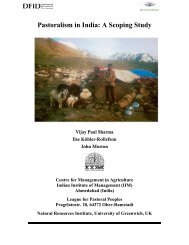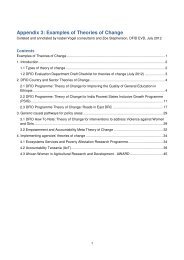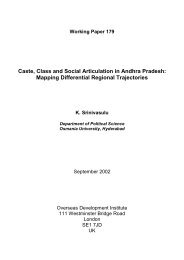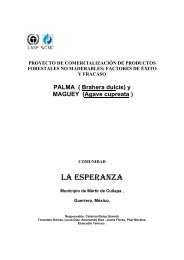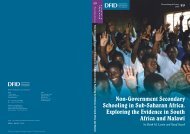Full Report - Research for Development - Department for ...
Full Report - Research for Development - Department for ...
Full Report - Research for Development - Department for ...
Create successful ePaper yourself
Turn your PDF publications into a flip-book with our unique Google optimized e-Paper software.
Strengths and limitations<br />
meant that we did not do more than a cursory search of several databases<br />
identified in our initial strategy (Appendix 2.2). In saying this, the functionality of<br />
the main databases used in this review, including PubMed and POPLINE, had<br />
reasonable functionality. Some databases also did not include abstracts as part of<br />
their bibliographic records, limiting their usefulness. This potentially means that<br />
we may have missed some relevant studies, although we have searched through a<br />
broad range of databases in health, development and social sciences. We have also<br />
tried to counter any limitations through running a number of more limited search<br />
strategies on these databases, as well as through citation searching of references<br />
of included studies and handsearching of a number of key journals and websites.<br />
Despite searches of a range of governmental and international agencies, nongovernmental<br />
organisations and some other websites, and searching databases that<br />
picked up on discussion papers and theses, there may also be additional grey<br />
literature sources that might have been searched in more detail had resources<br />
permitted.<br />
5.2 Scope of review<br />
It is also important to acknowledge that by restricting the focus of our review to<br />
studies that had maternal or infant mortality as one of the outcomes, as indicated<br />
in our revised protocol, we have certainly excluded bodies of evidence related to<br />
non-mortality maternal and infant health outcomes in poor urban populations,<br />
including those that produced a large volume of evidence. This includes work<br />
produced by, <strong>for</strong> example, Cooper et al. (2002) and colleagues in a poor peri-urban<br />
location (Khayelitsha) in South Africa, work by the African Population and Health<br />
<strong>Research</strong> Center (APHRC, 2002a, 2002b) in Nairobi, and a range of individual<br />
studies (e.g. Mullany et al., 2007). Qualitative studies that looked at the reasons<br />
<strong>for</strong> uptake and continued participation in maternal and infant health services, but<br />
did not look at the relationship with changes in mortality outcomes were excluded<br />
from the analysis, but would also have been a valuable additional source of<br />
in<strong>for</strong>mation. Such studies could also have helped in understanding the impacts of<br />
different contexts and cultures on the use of services. For instance Fotso et al.<br />
(2009a, 2009b) looked at factors that influenced women’s maternal health service<br />
seeking behaviours in the slums of Nairobi.<br />
We have already acknowledged that there were major problems in identifying<br />
‘poor’ populations – we took an inclusive strategy and included measures that are<br />
frequently used as proxies <strong>for</strong> ‘poor’. Indeed when we read full text articles, it<br />
became clear that many studies, while implicitly focusing on individuals in poor<br />
countries, did not specifically report socio-economic status or other measures of<br />
poverty.<br />
The quality and heterogeneity of studies identified has also meant that we have<br />
had to undertake a narrative review rather than meta analyses.<br />
What are the effects of different models of delivery <strong>for</strong> improving maternal and infant<br />
health outcomes <strong>for</strong> poor people in urban areas in low income and lower middle income<br />
countries? 54



